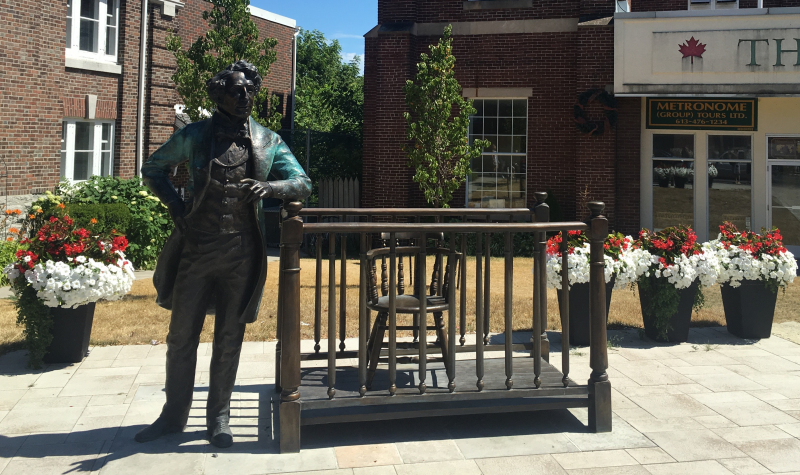At a special meeting last Wednesday, Committee of the Whole for Prince Edward County decided to move forward with “A Path Forward”, which includes the returning of the Sir John A. Macdonald "Holding Court" statue back to its donors.
Committee heard presentations from Tsi Tyónnheht Onkwawén:na (or TTO), a local Mohawk language and cultural centre, and the Gord Downie & Chanie Wenjack Fund in regards to their developing partnership with County Museums to create a new exhibit titled “A Path Forward” at the Macaulay Heritage Park in the spirit of truth and reconciliation. The "Holding Court" statue, originally erected in 2015 at Picton Main Street, has been in storage since last year pending further official decision.
The proposed plan, which was informed by community feedback, was to re-display the statue only if it was situated with the inclusion of an Indigenous perspective. To fulfill this, County Museums, along with its partners, sought to include the statue along with the Path Forward exhibit. Furthermore, Committee heard deputations from David Warrick of the Macdonald Project, the statues’ donor, and from local resident David MacKinnon who in turn defended the statues’ namesake as the architect of Canada and peacemaker with Canada’s Indigenous peoples.
The Macdonald Project maintained that, though it was in consultation with the Path Forward proposal, it did not want the statute situated within a context that included residential schools. The Prince Edward County Arts Council also put forward a deputation that it was their view that the statue has become a symbol representing the much larger issue of the local community’s relationship with Indigenous Peoples, and that decisions regarding it should be guided by Principles of Reconciliation and the Calls to Action in the Truth and Reconciliation Commission (TRC) of Canada’s report and the United Nations Declaration of the Rights of Indigenous Peoples.
Committee then deliberated on various aspects of the proposal, including whether to formally engage the Gord Downie & Chanie Wenjack Fund as an exhibit partner due to concerns brought by Couns. John Hirsch and Bill Roberts in regards to the veracity of Chanie Wenjack’s story. Both councillors brought forth an amending motion that would effectively pause the partnership, especially in terms of potential exhibit revenue splitting, but it was defeated (7 to 5). Additionally, most of committee affirmed that the statue should be returned to the Macdonald Project, as it was deemed to be a potential legal risk if the statue were to be displayed against donor and artist wishes. In the end, committee voted nearly unanimously to approve the exhibit and part ways with the statue.
John A. Macdonald called the County of Prince Edward home during his youth, and the statue commemorated his first legal victory at the Picton Courthouse in 1834.
Listen to the story below:


